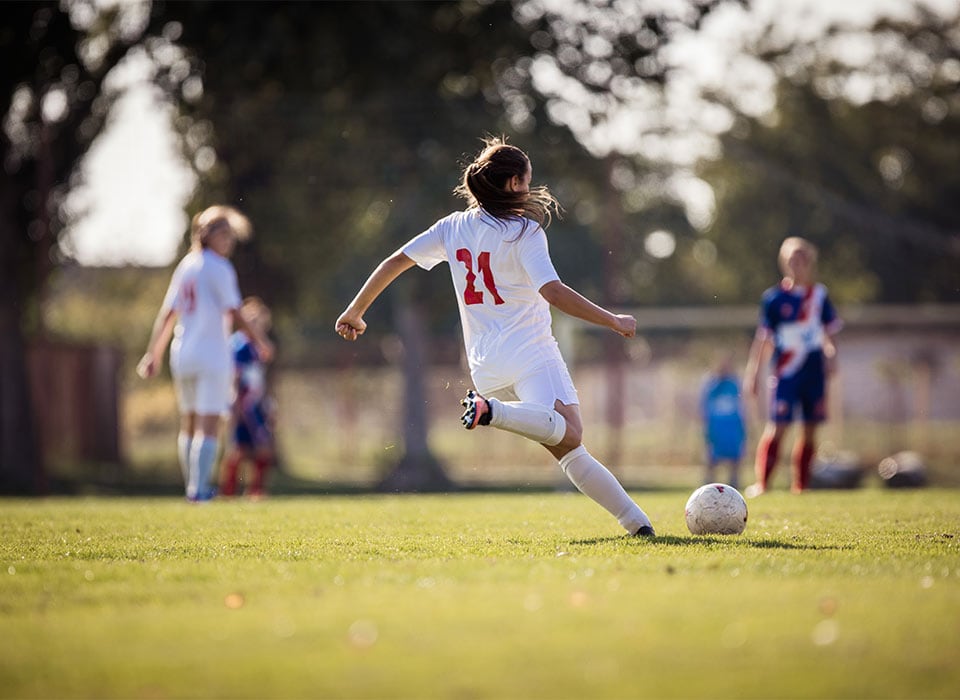Strength makes an athlete better. At all levels and ages, a stronger athlete will have a competitive advantage over and suffer fewer injuries than a weaker one.
Weight room strength is very different from athletic strength, however, so what exercises should coaches, parents, and trainers use to gauge athletic ability and injury prevention in soccer players? Here are my picks.
#1 Rear foot elevated (Bulgarian) split squats
A rear foot elevated split squat (RFESS) is effectively a lunge that is more load isolated to the front leg than a traditional standing lunge. In addition to demonstrating great glute, quad, and hamstring synergy this exercise also highlights unilateral asymmetries (being stronger on one side than the other) – a strong indicator for injury potential.
- The lunge position is a great overall structural indicator of the lower leg, thigh, and hip mobility/stability relationship.
- Split squats also minimize and help to equalize mechanical concerns often found in traditional squats.
#2 Dead lifts
Athletes need to be able to extend ankles, hips and knees as well as bend over at the waist with a flat back and knees straight. Dead lifts strengthen the major muscles on the back side of the body including bottoms of the feet, calves, hamstrings, glutes, spinal stabilizers, lats, traps, and even head stabilizers.
- It can take a long time to get an athlete flexible enough and stable enough for dead lifts. Sometimes simply being able to perform a proper dead lift (with minimal load) will make someone become more athletic.
#3 Plank & side plank
Planks demonstrate core stability under tension. This stability is ideal for allowing an athlete to absorb and produce force at the same time; kicking a ball while warding off a defender for instance.
- For added challenge maintain alignment while moving one arm or leg.
#4 Nordic curls
To perform a Nordic curl you’ll need a partner. You kneel upright on a soft surface with your knees at 90 degrees, lower legs along the ground, and toes pointed at the ground. Your partner holds your heels and pushes downward on your feet while you lean forward leading with your belt buckle. You’ll feel an instant tightness in your hamstrings.
- A full repetition involves either leaning forward slowly until your hands touch the ground or until you’re able to pull yourself back into an upright kneeling position.
#5 Sumo squat
Sumo squats orient the feet and knees wide and turned out about 45 degrees. This stance puts added stress on inner thigh muscles during a squat.
- Perform sumo squats unloaded (no extra weight) at first and slowly progress into loaded activity as your range of motion improves.
- Follow up a sumo squat with mild split stretches for improved strength and flexibility.
While this is by no means a thorough list of strength exercises applicable to soccer, these exercises do get the most bang for the buck.
If your athletes can perform each of these exercises and perform them well, their likelihood for injury goes down while their performance output will go up.
